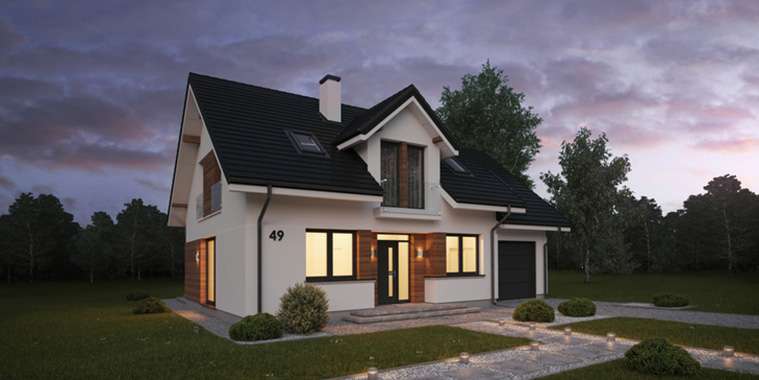The phrase “single-family home” is something you’ll often see when browsing the market or as you search real estate listings. A single-family house might seem easy to define: It’s single-family housing, right? Eh, not exactly. To be classified as this type of home, there are requirements the structure must meet.
What are those requirements? Let’s take a look.
What is a single-family home?
The legal description for this home is “a structure maintained and used as a single dwelling unit.” So what does that mean, exactly? A single dwelling unit will have these characteristics:
• No common walls This home is a stand-alone, detached property. This means that the home doesn’t share common walls or a roof with any other dwelling.
• Land A single-family home has no shared property but is built on its own parcel of land. Meaning that the area around the building is for the private use of the owner only.
• Entrance and exit A single-family home has its own private and direct access to a street or thoroughfare. This is as opposed to an apartment, which has hallways and a lobby that lead to street access.
• Utilities Only one set of utilities can service this home — and may not be shared in any way with another residence. This applies to heating, electricity, water, or any other essential service.
• One owner This home is built as the residence for one family, person, or household, whose owner has an undivided interest in the unit.
• Single kitchen This kind of home has one kitchen. Adding a kitchen to an in-law suite or carriage house will alter a home’s zoning classification.
Benefits of buying a single-family home
The type of home you buy depends on your budget and your needs. A house like this will suit a home buyer who’s seeking privacy. Since it is built on its own slice of land, you’ll likely have some distance from your neighbours.
You’ll also probably enjoy the extra storage space of an attic or garage in this type of house, whereas a multi-family home has shared space, including a shared yard.
Typical single-family homes on the market also come in many different architectural styles — whether ranch, Colonial, mid-century modern, Cape Cod — as opposed to the more straightforward design of a condo, townhomes, or apartment buildings.
Affordable housing offers lower housing costs, but these structures are usually not of the single-family type.
Disadvantages of buying a single-family home
While owning a single-family home will mean total independence, there are a few factors that can be seen as downsides. Condos, townhouses, or multifamily properties may come with common gyms or pools open to all owners, but single-family homes don’t usually have community amenities. If a single-family home property has a pool on it, the owner is solely responsible for its upkeep, along with other amenities like the garage or fencing.
The purchase price of a single-family home tends to be higher, since you’re buying an entire lot. That translates into a larger down payment and closing costs, as well as recurring expenses like insurance and property taxes on the full area.
Searching for single-family homes
When you start a search of real estate listings for your family, you’ll see a zoning letter in the house’s description.
A single-family home will be zoned “R,” which refers to “Residential,” followed by a number. An R1 rating indicates that the land allows for only one home.
Multi-family residences normally have an R2 rating, which means two residential dwellings can exist on the property, typically in the form of a duplex. And an R3 rating permits multi-family units such as apartments or condominiums.
Ready to buy a house? A professional REALTOR® is always available to help and to answer any questions you may have in the search for your perfect forever-home.
— Realtor.com



